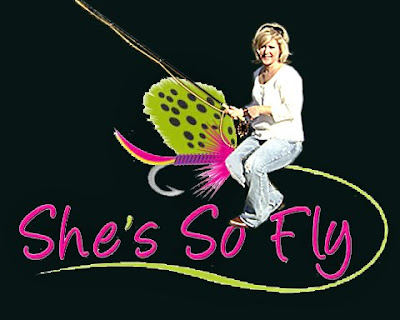Practice makes perfect in the sport of fly fishing. The fact of the fisherman being classified as a beginner or seasoned veteran does not mean there is no room to learn. The sport is constantly renewing and advancing the techniques and gear of past times, and the sport is gaining new enthusiasts in the process.
The type of rod used relies on the fisherman. In this sport the rod is considered an extension of the arm, as the line is cast not the rod. Rod materials range from graphite to bamboo, and are based around the weight of line being used.
There is a large variety of lines on the market. The lines vary in weight and are chosen based on factors like the type of fly being used and what type of casts are expected. Types of lines include Weight Forward Floating, Level, Weight Forward Sinking, and Floating.
The reel connects the line to the rod. They also wind the line and serve as backing. The backing can assist in faster retrieval and support when a fish pulls the line. Reels are made of a range of materials from Titanium to Aluminum. There are also special reels made for saltwater, as an average reel can incur damage from the salt crystals.
Veterans have made the assembly of the rod easier. A well-known technique is rubbing paraffin wax from a small white candle onto the male parts of the rod. The wax prevents the pieces attached together from coming loose or getting stuck together. Once the wax has been applied, the reel can be attached.
The enthusiast should also gather other gear. Important items are flies, leaders, tippets (optional), and waders for the wading fisherman. They can also find great use in a fishing vest, a fly box, and climate based items like sunscreen and bug repellent.
Once the gear has been collected the individual can begin practicing. The fisherman's cast is the most important element in a successful experience. The basic cast requires the individual to make a "C" loop with the line. The line will make a "whoosh" sound, though the rod should come to a stop before the line will go.
Modern advancements have increased the sports success. Whether a beginner or seasoned veteran, any fisherman can enhance their experience. By practicing casting techniques and attaining sufficient gear fisherman can enjoy fly fishing.
The type of rod used relies on the fisherman. In this sport the rod is considered an extension of the arm, as the line is cast not the rod. Rod materials range from graphite to bamboo, and are based around the weight of line being used.
There is a large variety of lines on the market. The lines vary in weight and are chosen based on factors like the type of fly being used and what type of casts are expected. Types of lines include Weight Forward Floating, Level, Weight Forward Sinking, and Floating.
The reel connects the line to the rod. They also wind the line and serve as backing. The backing can assist in faster retrieval and support when a fish pulls the line. Reels are made of a range of materials from Titanium to Aluminum. There are also special reels made for saltwater, as an average reel can incur damage from the salt crystals.
Veterans have made the assembly of the rod easier. A well-known technique is rubbing paraffin wax from a small white candle onto the male parts of the rod. The wax prevents the pieces attached together from coming loose or getting stuck together. Once the wax has been applied, the reel can be attached.
The enthusiast should also gather other gear. Important items are flies, leaders, tippets (optional), and waders for the wading fisherman. They can also find great use in a fishing vest, a fly box, and climate based items like sunscreen and bug repellent.
Once the gear has been collected the individual can begin practicing. The fisherman's cast is the most important element in a successful experience. The basic cast requires the individual to make a "C" loop with the line. The line will make a "whoosh" sound, though the rod should come to a stop before the line will go.
Modern advancements have increased the sports success. Whether a beginner or seasoned veteran, any fisherman can enhance their experience. By practicing casting techniques and attaining sufficient gear fisherman can enjoy fly fishing.
About the Author:
Are you a fly fishing newbie? Get the low down on super fly fishing tips now in our guide to all you need to know about fly fishing.


 12:00 PM
12:00 PM
 Unknown
Unknown











1 comments:
When casting, should the fly stay afloat or sink?
Post a Comment